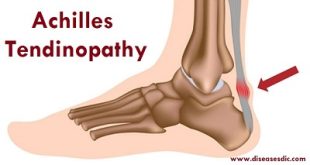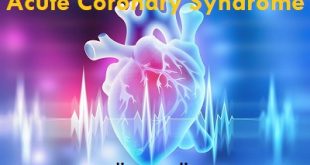Overview
Aseptic meningitis is an illness characterized by serous inflammation of the linings of the brain (i.e., meninges), usually with an accompanying mononuclear pleocytosis. Clinical manifestations vary, with headache and fever predominating. The illness is usually mild and runs its course without treatment; however, some cases can be severe and life threatening.
Aseptic meningitis syndrome is not caused by pyogenic bacteria. Although it is usually caused by certain viruses, it has a number of other etiologies as well, both infectious and noninfectious. Hence, the term aseptic meningitis is no longer synonymous with viral meningitis, although the two are still often used interchangeably.
Pathophysiology
Organisms colonize and penetrate the nasopharyngeal or oropharyngeal mucosa, survive and multiply in the blood stream, evade host immunologic mechanisms, and spread through the blood-brain barrier. Infection cannot occur until colonization of the host has taken place (usually in the upper respiratory tract). The mechanisms by which circulating viruses penetrate the blood-brain barrier and seed the cerebrospinal fluid (CSF) to cause meningitis are unclear.
Viral infection causes an inflammatory response but to a lesser degree than bacterial infection does. Damage from viral meningitis may be due to an associated encephalitis and increased intracranial pressure (ICP).
The pathophysiology of aseptic meningitis caused by drugs is not well understood. This form of meningitis is infrequent in the pediatric population.
Causes of Aseptic Meningitis
AM may arise from:
Infections such as:
- Viruses
- Parasites
- Bacteria
- Fungi
- Partially treated bacterial meningitis
- Problems with the immune system
- Certain cancers
- Certain medicines, such as antibiotics and non-steroidal anti-inflammatory medications (NSAIDS)
Risk Factors for Aseptic Meningitis
Many different things can cause aseptic meningitis, including viruses, fungi, tuberculosis, worms, some medications, and infections near the brain or spinal cord, such as epidural abscesses.
Risk factors for aseptic meningitis include:
- Exposure to someone with recent virus infection;
- Exposure to children in a daycare setting;
- Being a healthcare worker; or
- Having a suppressed immune system.
Symptoms
Aseptic (viral) meningitis is serious but rarely fatal in healthy people with normal immune systems. Usually, symptoms last from 7 to 10 days and the patient recovers completely.
People with this condition may have the following symptoms:
- Headache
- Neck stiffness
- Sensitivity to light
- Increased sleepiness
- Unresponsiveness
- Fever
- Nausea, vomiting
- Lack of appetite
Aseptic meningitis complications
- Seizures sometimes can complicate meningitis. Encephalitis may develop in some patients.
- The most common sequela following mumps meningoencephalitis is sensorineural deafness.
- Hydrocephalus from aqueductal stenosis has been reported as a late sequela of mumps meningitis and encephalitis in children.
Diagnosis of Aseptic Meningitis
To diagnose aseptic meningitis, a doctor will first do a physical exam to assess a person’s symptoms. If a person is very ill, the doctor will likely recommend some further tests to help diagnose the problem, including:
- Blood cultures
- CT scans to check for brain swelling
- Chest X-rays
The only test that can confirm whether a person has meningitis or not is a spinal tap.
A spinal tap involves removing fluid from a person’s spinal column and analyzing it to check for viral or bacterial infections.
A doctor will also check the fluid for elevated protein and white blood cells, both of which indicate infection.
Aseptic meningitis treatment
Many patients who have aseptic meningitis can be cared for on an outpatient basis, but those who have profound headache, nausea, vomiting, or CSF pleocytosis with a polymorphonuclear leukocyte predominance should be admitted for observation. Antibiotic coverage for bacterial meningitis may be given, at the discretion of the managing clinician. Given the potential for serious neurological morbidity and the persistently high mortality rates of bacterial meningitis, rapid institution of antibiotic coverage is essential when the diagnosis of bacterial meningitis is suspected. A third-generation intravenous cephalosporin is the customary choice.
Antiviral therapy
Effective antiviral therapy is available against herpes simplex virus type 1 (HSV-1), varicella, and cytomegalovirus. In immunosuppressed patients, long-term therapy may be necessary.
Acyclovir is recommended for immunocompetent hosts with herpes simplex virus type 2 (HSV-2) meningitis and a primary genital herpes infection. Valacyclovir and foscarnet are alternative antiviral agents.
Although formal clinical trial evidence of efficacy is lacking given the rarity of these diseases, it is advisable to administer intravenous acyclovir, 10–15 mg/kg every 8 hours for 10–14 days, to patients with herpes simplex virus and varicella zoster virus myelitis as soon as a pathogen is confirmed in CSF by PCR or even empirically if the clinical suspicion is high enough (i.e., recent zoster rash or recurrent genital herpes outbreaks)
Specific antibacterial therapy
For meningitis from the following pathogens, these specific agents are appropriate:
- Tuberculosis- triple drug therapy with rifampin/isoniazid/pyrazinamide
- Actinomycetes and spirochetes – penicillin and ceftriaxone
- Brucella – doxycycline or rifampin
- Pasteurella tularensis – gentamicin
- Antifungal therapy
- Antifungal agents of choice include amphotericin B, fluconazole, and flucytosine.
Steroids
In general, corticosteroids are avoided in aseptic meningitis because of their inhibitory effects on host immune responses. Occasionally, glucocorticoids, such as dexamethasone, are useful when meningitis is associated with signs of increased intracranial pressure. Meningitis from Vogt-Koyanagi-Harada syndrome responds to prednisone in moderate to high doses.
Prevention of Aseptic Meningitis
To prevent spreading viruses that can cause aseptic meningitis, be sure to:
- Avoid close contact with people who are sick
- Stay home from work, school, and errands when you are sick
- Cover your mouth and nose with a tissue when coughing or sneezing
- Wash your hands often
- Avoid touching your eyes, nose or mouth
- Keep current on all recommended vaccinations
 Diseases Treatments Dictionary This is complete solution to read all diseases treatments Which covers Prevention, Causes, Symptoms, Medical Terms, Drugs, Prescription, Natural Remedies with cures and Treatments. Most of the common diseases were listed in names, split with categories.
Diseases Treatments Dictionary This is complete solution to read all diseases treatments Which covers Prevention, Causes, Symptoms, Medical Terms, Drugs, Prescription, Natural Remedies with cures and Treatments. Most of the common diseases were listed in names, split with categories.








what’s the real cause?
To know more about real causes, please have a glance at the post.
it affects which part of the brain?
It affects the layers of tissue that cover the brain and spinal cord (meninges) and of the fluid-filled space between the meninges (subarachnoid space) when it is caused by viruses.